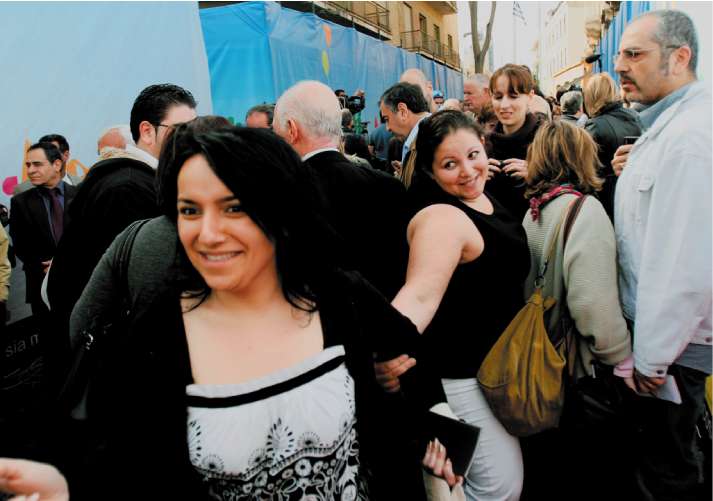Jubilation as street that symbolised a divided Cyprus is reopened

The ceremonial opening of a Nicosia shopping street, first divided by barricades 50 years ago, was supposed to bolster hopes that a lasting solution to the Cyprus problem may be within reach. That dream lasted just 12 hours as a spat about policing erupted last night, forcing Ledra Street to close again.
In 1958, Turkish Cypriot residents erected the first barricades across Ledra Street, two years before independence from British rule. The division became permanent in 1964 after outbreaks of fighting between Greek and Turkish Cypriot communities, battling for mastery of the island. Ten years later Turkey invaded northern Cyprus, and the partition that had begun at Ledra Street spread to the whole island. But while the subsequent decades have yet to bring final agreement on Cyprus's political destiny, more than 30 years of peace – and the rampant prosperity of the south – have done much to dissolve the ethnic hatreds that once beset it.
Yesterday's opening took place in a carnival atmosphere, accompanied by the release of hundreds of coloured balloons. Both Greek and Turkish Cypriots participated in removing the barricades, and then members of both communities strolled around the zones long closed to them.
Ledra Street became the sixth point at which people can cross between north and south, though they must still show identification when doing so. But of all obstacles overcome so far, it was the most symbolic.
"By opening this street, we hope the road to a solution to the Cyprus problem will also open," said George Iacovou, an aide to the Greek Cypriot President, Demetris Christofias. Ozdil Nami, an aide to the Turkish Cypriot leader Mehmet Ali Talat, said: "This is a historic event. A small step, but a very important step."
But it was a case of one step forward and two steps back. The presence of Turkish Cypriot police in the disputed UN-controlled no-man's-land led to the barriers abruptly coming down again. "We managed to turn the world's attention on us today and hours later we've managed to mess things up," said Valentina Sodocleous, one of the protesters at the closed crossing told Associated Press last night.
Hopes of reaching a settlement on the divided island had been raised after the election of Mr Christofias as President of the internationally recognised Greek Cyprus, committed to finding a solution to Europe's most enduring territorial dispute.
A solution seemed at hand in 2004 when Kofi Annan, who was UN secretary general, sponsored a plan to reunify the island by means of a referendum, prior to Cyprus joining the EU. But Greek Cypriots turned down the plan and Cyprus joined the EU with its divisions intact.
Ledra Street runs through the medieval heart of Nicosia and across the "green line" that has been patrolled by the UN since 1974. The Greek part of the island has prospered, its affluence reflected in the office towers and expensive shops. The self-declared Turkish Republic of North Cyprus, which is only recognised by Ankara, has failed to boom and the markets and small shops reflect the traditional face of the city.
Join our commenting forum
Join thought-provoking conversations, follow other Independent readers and see their replies
Comments